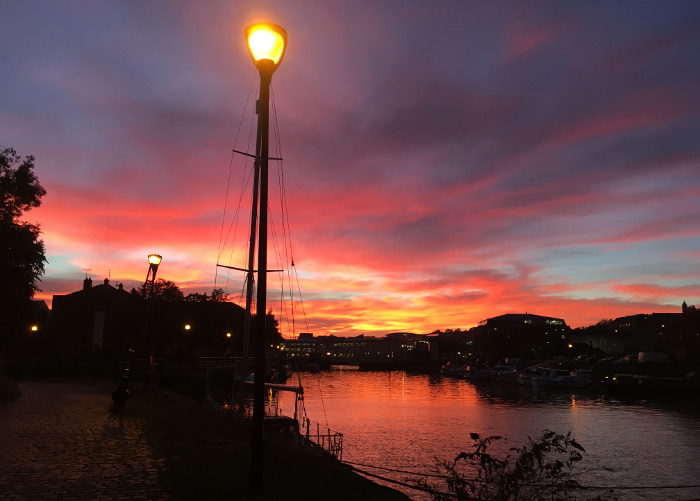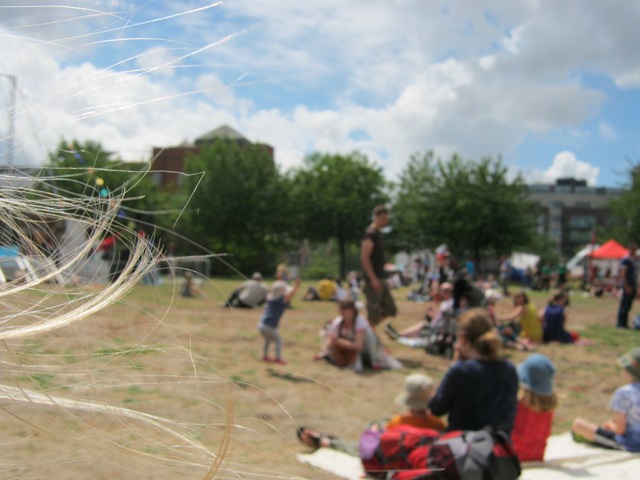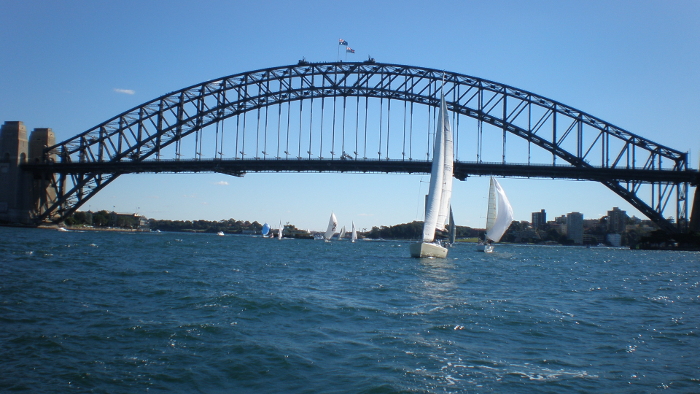 In today’s guest post, Annee Lawrence, the author of The Colour of Things Unseen, examines the power of fiction to transcend borders and offer insights into communities and landscapes other than our own, with positive outcomes.
In today’s guest post, Annee Lawrence, the author of The Colour of Things Unseen, examines the power of fiction to transcend borders and offer insights into communities and landscapes other than our own, with positive outcomes.
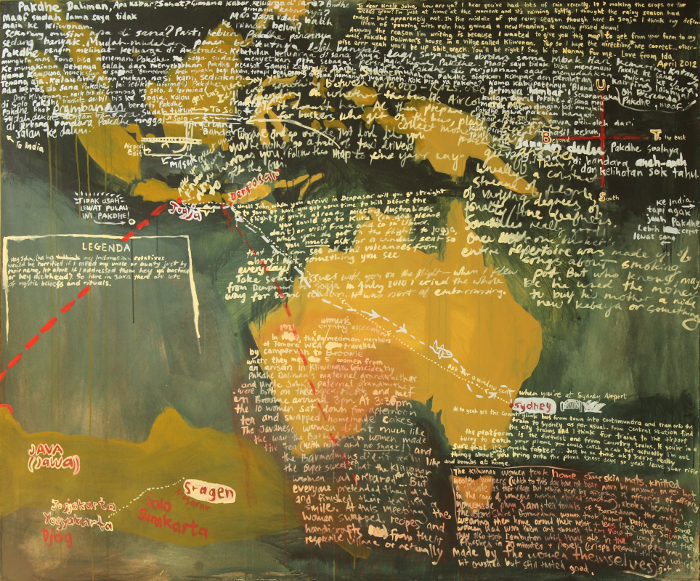
Map for Pakdhe Daliman and Uncle John by Ida Lawrence
In this painting, the Australian-Indonesian artist Ida Lawrence uses maps and constructed letters to two uncles, one in Australia and the other in Indonesia. One letter is inviting her Uncle John to travel from his village in south-western New South Wales to meet and visit her Indonesian family in their village in Central Java. The other is addressed in Indonesian to her Javanese uncle, Pakde Daliman, inviting him to visit her Uncle John.
Different forms of address are used in the letters which give directions in Indonesian or English on how to get from their respective villages, onto the plane, through customs, what to expect to see along the way, how to get to the other’s village when they arrive at the airport. The tone of the letter to Uncle John is colloquial and even cheeky, while the letter to Pakde Daliman begins with enquiries about her uncle’s health, her aunt, the rice crops, and other family members.
A further painting will offer cross-cultural tips to her uncles and, in a corner of this painting, there is a story about a time in 1921 when the female ancestors on both sides of her family met up in Broome with their respective women’s groups for afternoon tea and swapped recipes and handicrafts made in their respective villages. Ida Lawrence is my daughter.
Use fiction to encourage understanding
Prior to writing the novel The Colour of Things Unseen (Aurora Metro Books, UK 2019), I wondered why Australians in particular have such little knowledge or even curiosity about Indonesia – the largest of its close neighbours –– and its remarkable history, peoples, cultures, and art; or about the ways in which their respective histories overlap and interconnect.
There are not many Australian novels set in Indonesia, and some poetry, but when I began looking at the novels I found that, even in those that were well written, the Indonesian characters were often portrayed as devious, unknowable and shadowy. They had little or no agency.
The plots seemed to always involve an Australian journalist, tourist or business person arriving in Indonesia and, by degrees, being damaged in some way. They rarely spoke Indonesian, or any of the other local languages, and their cross-cultural understanding remained limited as they were plunged into culture shock.
This led me to consider the way literature – like the media, and perhaps also like the way histories are presented and studied – contributes to and reinforces the demonisation of certain others. Could a different kind of literature contribute to a more respectful engagement between people and countries, and within countries?
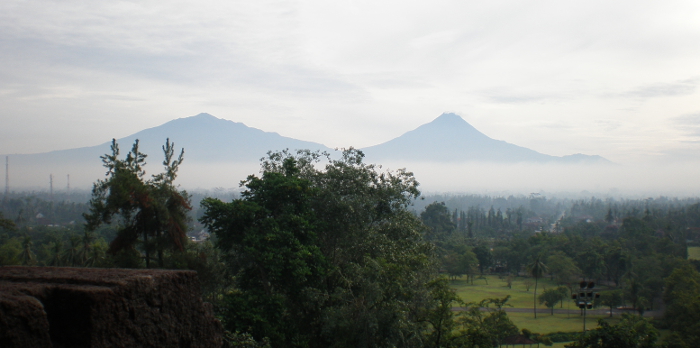
View from Borobodur by Annee Lawrence
Contribute to ideas of engagement
In my case this questioning is certainly linked to my daughter’s father and his extended family being Javanese, and to having family and friends in Indonesia and in the Australian-Indonesian community in Sydney.
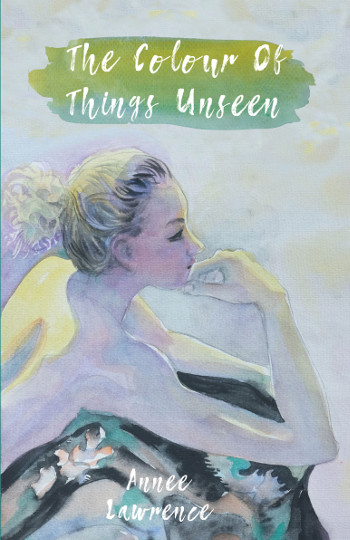 In The Colour of Things Unseen, my protagonist Adi leaves his family and small village in Central Java to travel to Australia to study art at a Sydney art school. He arrives in early 1997 and later that year Indonesia is hit by economic crisis and collapse. Then, in May 1998, the seemingly entrenched thirty-two year old Suharto dictatorship, in whose shadow he has grown up, collapses and is replaced by a democracy.
In The Colour of Things Unseen, my protagonist Adi leaves his family and small village in Central Java to travel to Australia to study art at a Sydney art school. He arrives in early 1997 and later that year Indonesia is hit by economic crisis and collapse. Then, in May 1998, the seemingly entrenched thirty-two year old Suharto dictatorship, in whose shadow he has grown up, collapses and is replaced by a democracy.
Adi comes of age in Australia. As a student he has a foot in both places, but when he marries and becomes a permanent resident his ties to family and village seem to loosen. Fifteen years later he returns, and he finds the place both familiar and strange, but also connected in diverse and surprising ways with art and artists of the region and the world.
The question that arises is what difference this will have on him as an artist living in the present time. And what of his relationship to place as he begins to respond to the shadows and concerns of what was hidden from view in the nation’s history that was fabricated and taught to him at school.
Make the strange familiar, and the familiar strange
When I came to write this novel I had in mind readers who were Indonesian and non-Indonesian and my aim was to make what was strange familiar and what was familiar strange (to the reader). Above all, though, I was interested in the questions: What is an artist? What can art do? Why does it matter? Can it expose us to new ways of connecting with the unfamiliar and the strange, and with the parts of our respective histories that remain hidden or disguise our links to the histories of others?
I also wondered whether there is a role for all kinds of artists including writers – in a world of disruption, displacement, and the politics of borders, wall building, exclusion and suspicion – to shed light on an imaginative blurring of national borders and boundaries that can show us a plurality of being and cross-cultural connectedness that we have yet to learn to fully recognise and peaceably live alongside.
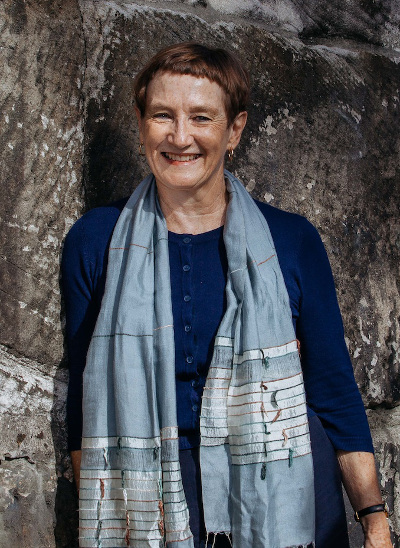 About the author
About the author
Annee Lawrence’s debut novel, The Colour of Things Unseen, is published by Aurora Metro Books (UK, 2019). Annee has worked as a tutor, writer, editor and community development worker in women’s health, disability rights and a range of social justice issues. Her research interests include the way identity shape-shifts in an unfamiliar place and culture; ethics, aesthetics, alterity and form in the cross-cultural novel; and Australian-Indonesian cross-cultural connection. She completed a PhD in creative writing in 2015 at the Writing and Society Research Centre, Western Sydney.
Annee lives in Sydney and has published in Griffith Review, New Writing, Hecate and Cultural Studies Review. In 2018 Annee was awarded the inaugural Asialink Tulis Australian-Indonesian Writing Exchange which was funded by the Australia-Indonesia Institute and hosted by Komunitas Salihara in Jakarta and Ubud Writers and Readers Festival in Ubud.
All photography in this post is by Annee Lawrence.
Read other writing masterclasses in the SkyLightRain Writing Insights series.
Got some writing insights to share? I’m always happy to receive feature pitches. Send an email to JudyDarley(at)iCloud.com.
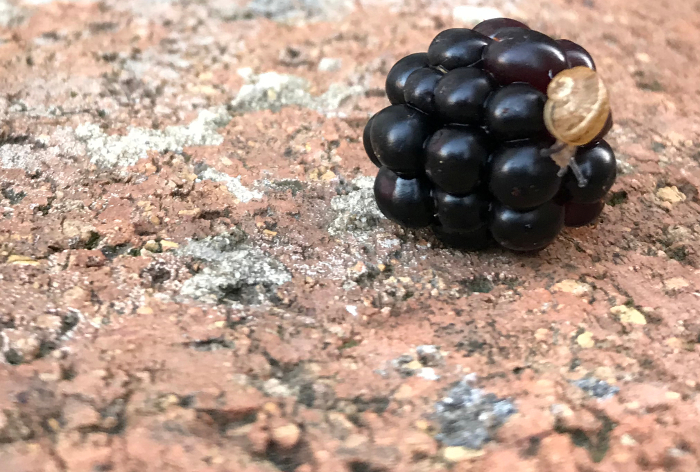 Imagine finding yourself within reach, as this tiny snail has, of a feast of mouthwatering proportions which just happens to comprise your very favourite food.
Imagine finding yourself within reach, as this tiny snail has, of a feast of mouthwatering proportions which just happens to comprise your very favourite food.
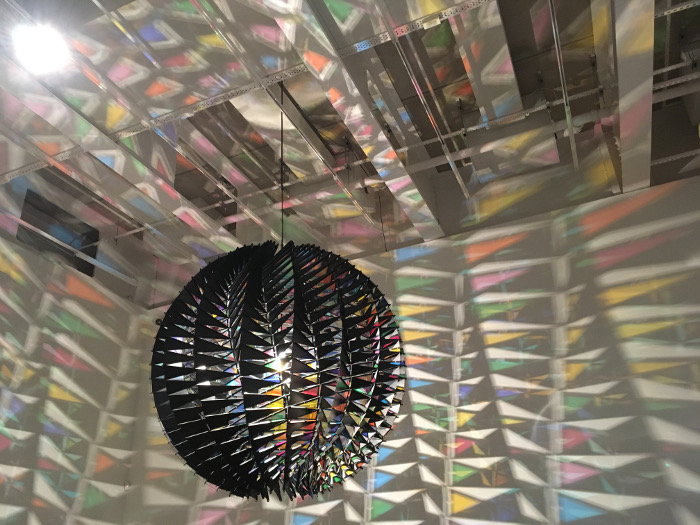 I became aware of Olafur Eliasson thanks to ‘
I became aware of Olafur Eliasson thanks to ‘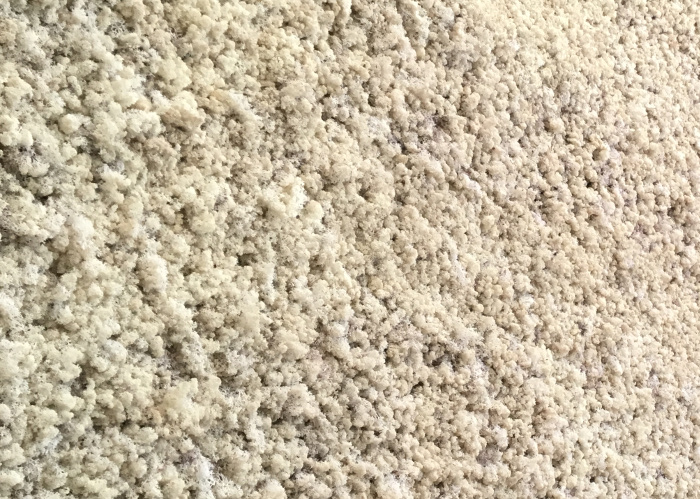
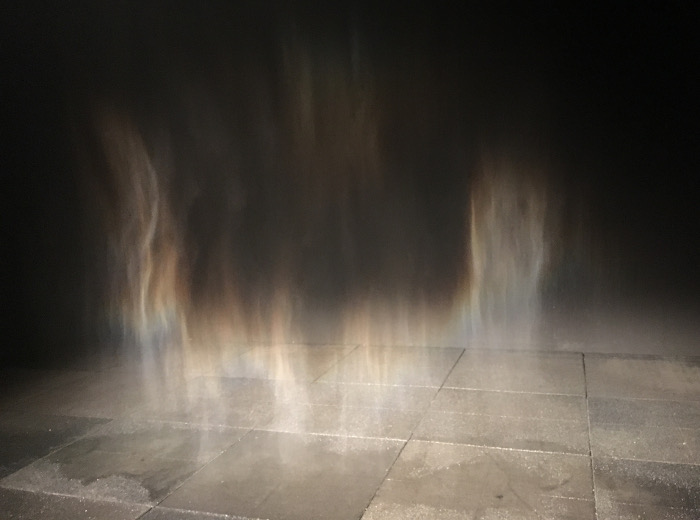
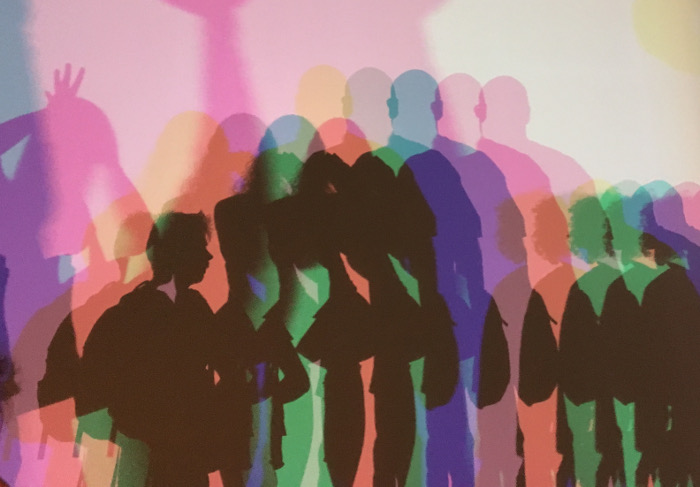
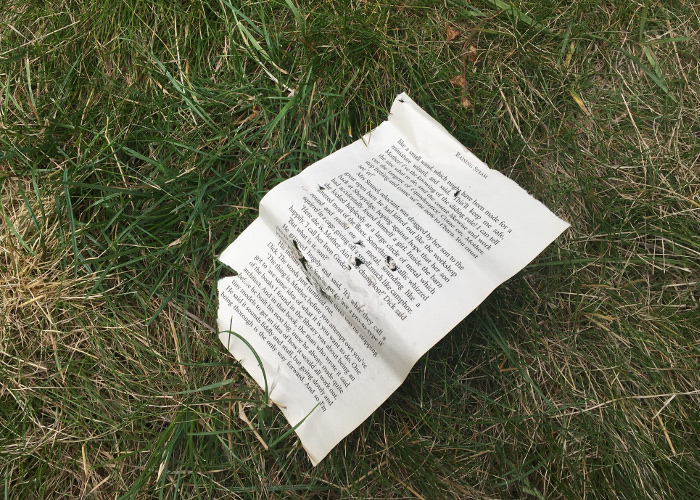
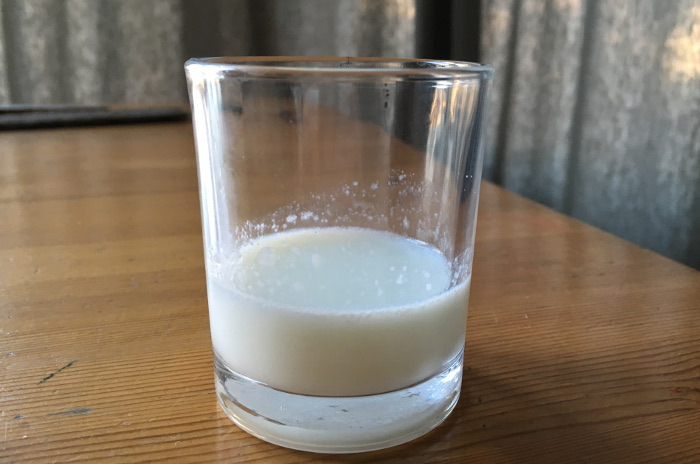
 In today’s guest post,
In today’s guest post, 

 In
In  About the author
About the author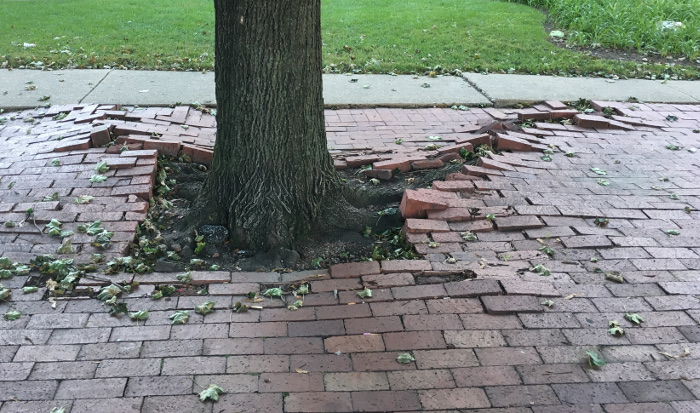 However much we try to force nature to fit into our urban structures, it’s clear that nature has its own plan. These tree roots quietly dislodging bricks in a Chicago city park are a great example of this.
However much we try to force nature to fit into our urban structures, it’s clear that nature has its own plan. These tree roots quietly dislodging bricks in a Chicago city park are a great example of this.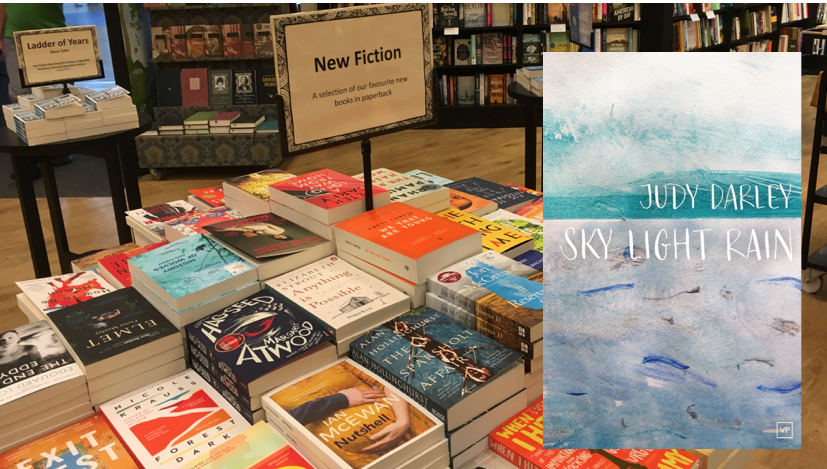 I’m excited to share the news that my short story collection Sky Light Rain will be published by Valley Press on 2nd November. To celebrate, I’m hosting an atmospheric evening of readings and music on the themes of sky, light, and rain.
I’m excited to share the news that my short story collection Sky Light Rain will be published by Valley Press on 2nd November. To celebrate, I’m hosting an atmospheric evening of readings and music on the themes of sky, light, and rain.